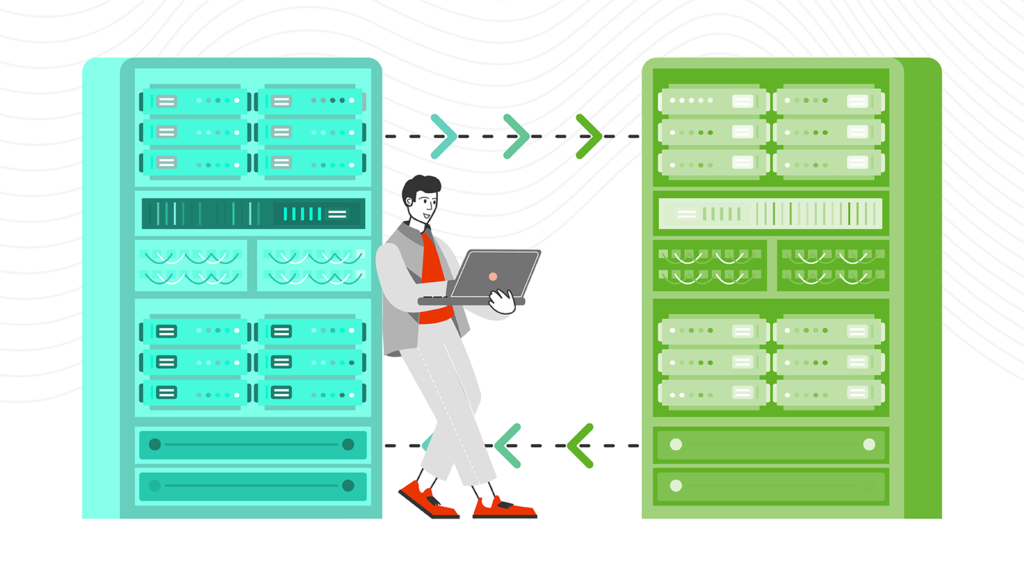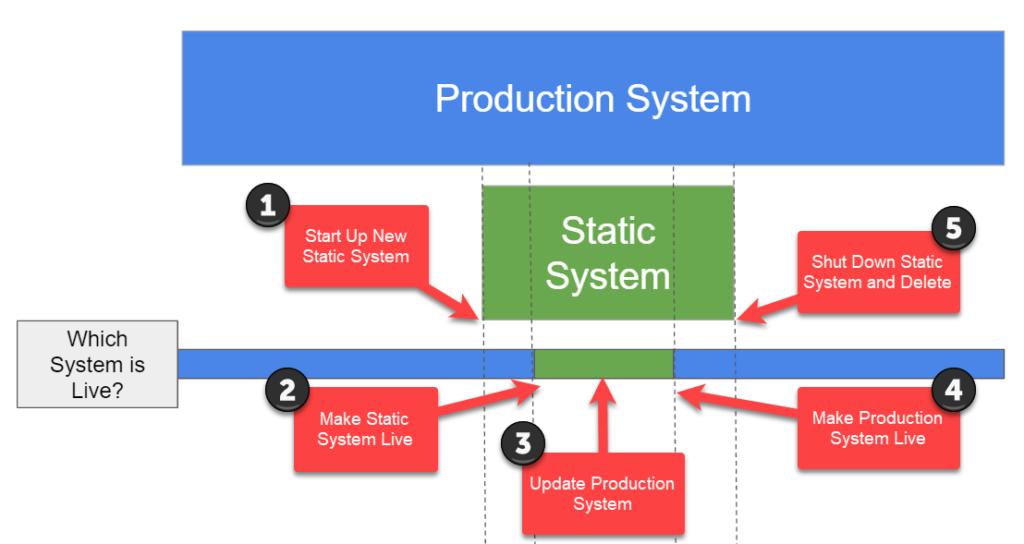
Jul. 07, 2020
Tom Humbarger
|
A Blue-Green implementation is a deployment technique that results in zero downtime and minimizes risk for companies who are managing complex websites or applications that need to be highly available. In this post, we explain Blue-Green implementations for Sitecore and share the three reasons that makes SearchStax deployments unique.
In a Blue-Green implementation, there are two identical environments called Blue and Green. At any time, only one of the environments is live and serving all of the traffic while the other environment is idle.
Enterprise companies generally have business requirements where their website or application is so critical to their business that they cannot have any downtime at all. From time to time, every system must undergo regular maintenance, upgrades, or patching — so these companies architect an environment to ensure that there is always a live production environment available while maintenance, updating, and testing can occur on the other version of their environment.
There are two options for Blue-Green implementations. The more traditional option is common for organizations that run their own servers in-house but it can also be done in the cloud. In this situation, the organization has two complete environments that are exact copies of their system and both copies are running at all times. When it’s time to perform maintenance, all traffic is routed to the second environment while the production version moves to an idle state. After performing maintenance and updates, traffic is re-routed back to the production server and the second environment is returned to its idle state.
The other option has become more popular as companies move to cloud infrastructure and use the cloud to manage both environments. A primary environment is the full-time production system and another temporary/dynamic environment that is created and used only during the short window of time that it takes for system maintenance, patching, and upgrading of the production environment. After the production environment is updated, the temporary environment is shut down and deleted. The challenge with this option is to minimize the time and resources it takes to create and mirror the temporary environment, perform the switchovers, and then delete the environment.
After 24 hours or so, the original system is returned into Production and the temporary Static system is shut down and deleted.

Kagool’s 2020 Sitecore MVPs
Reduce cloud deployment costs by 80% – By being able to rapidly spin up and then delete a Static system when they no longer needed it, the team is able to reduce their cloud deployment costs by more than 80%. The savings come from the fact that they only run and pay for their Static system about 1 week out of every 6 to 8-week production cycle.
Release automation adds to cost savings – The SearchStax APIs allow our customer to programmatically deploy a new Solr instance and seamlessly switch from one cluster to another with minimal human intervention which adds to the cost savings.
Minimize rollback risk – The final benefit of Blue-Green implementation is that it minimizes risk if something happens to the Production environment during the maintenance updates. It is easy to roll back to the temporary Static system while correcting any issues that may arise during the restoration of the original Production environment.
There are 3 reasons that make Blue-Green implementation with SearchStax unique:
If your website or application is so critical to your business that you cannot have any downtime, you need to explore how a Blue-Green implementation for Sitecore can meet your requirements.
The Stack is delivered bi-monthly with industry trends, insights, products and more
Copyrights © SearchStax Inc.2014-2024. All Rights Reserved.
SearchStax Site Search solution is engineered to give marketers the agility they need to optimize site search outcomes. Get full visibility into search analytics and make real-time changes with one click.
close
SearchStax Managed Search service automates, manages and scales hosted Solr infrastructure in public or private clouds. Free up developers for value-added tasks and reduce costs with fewer incidents.
close
close